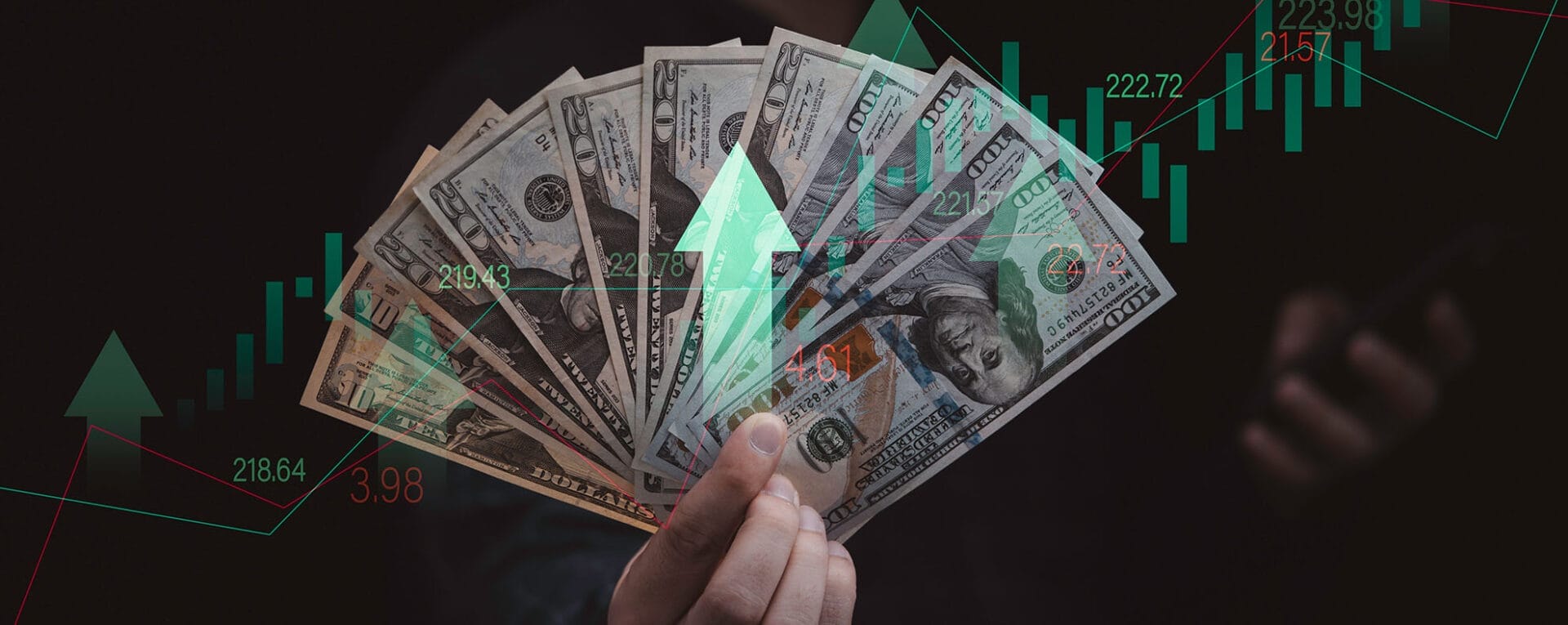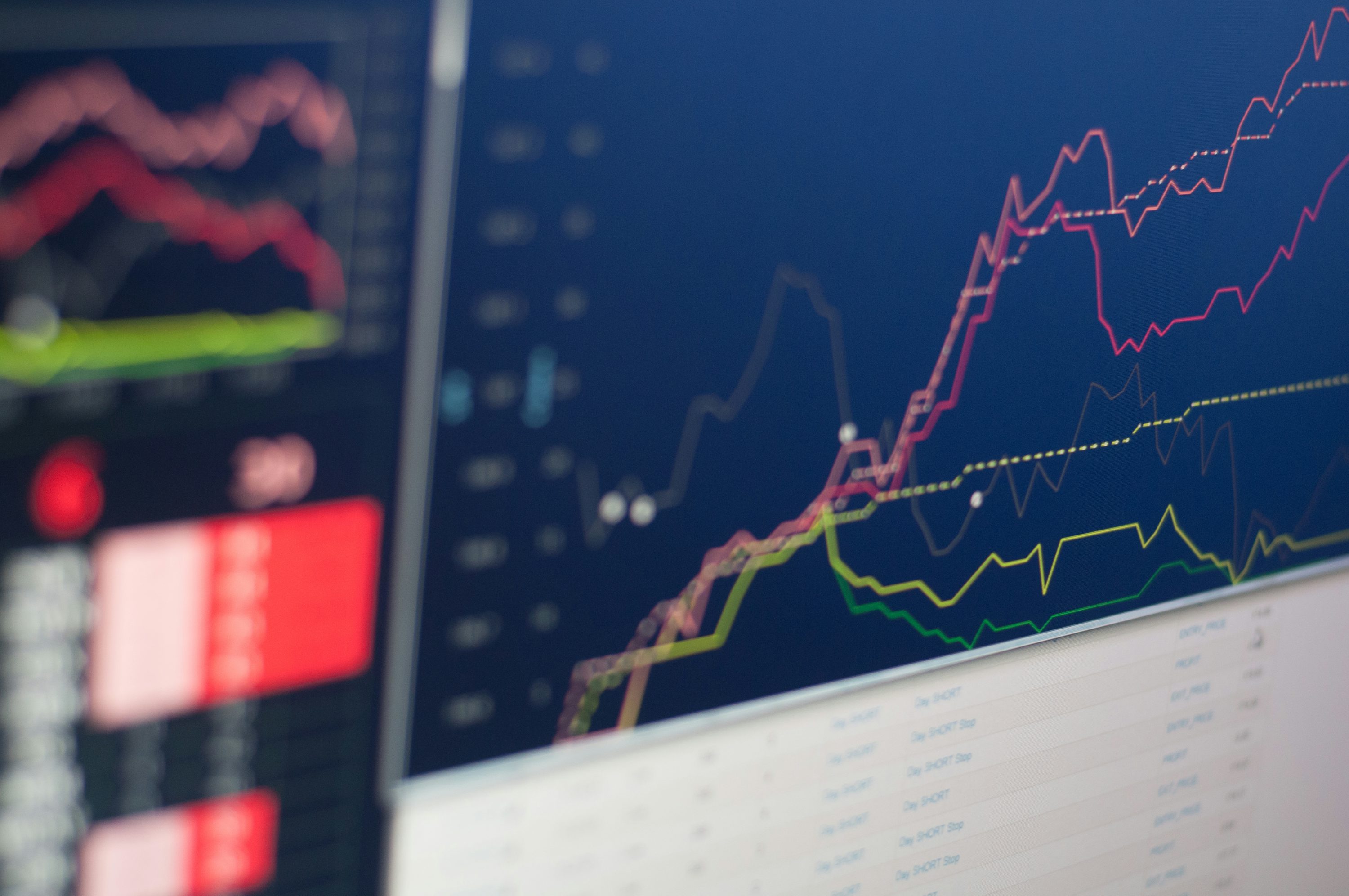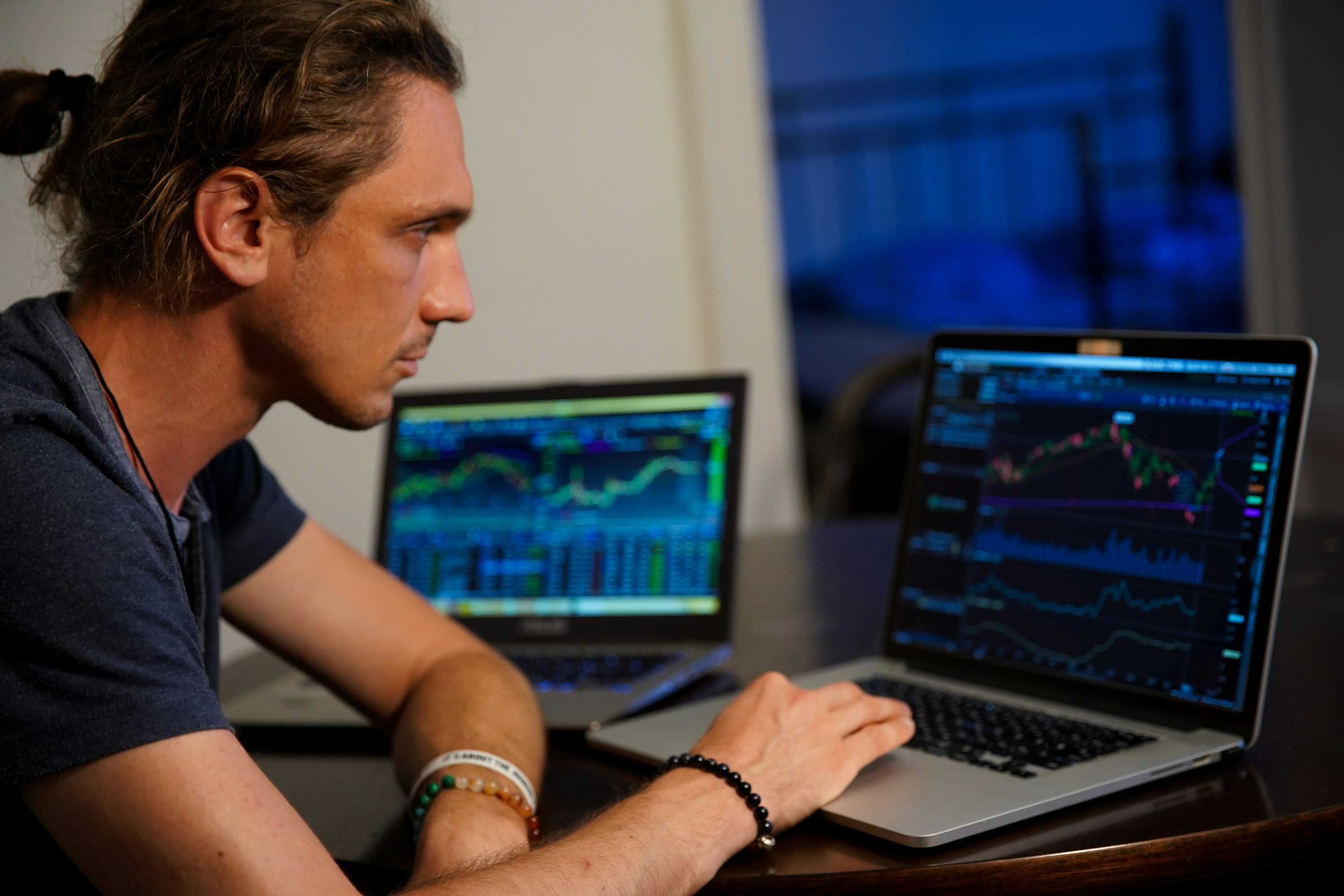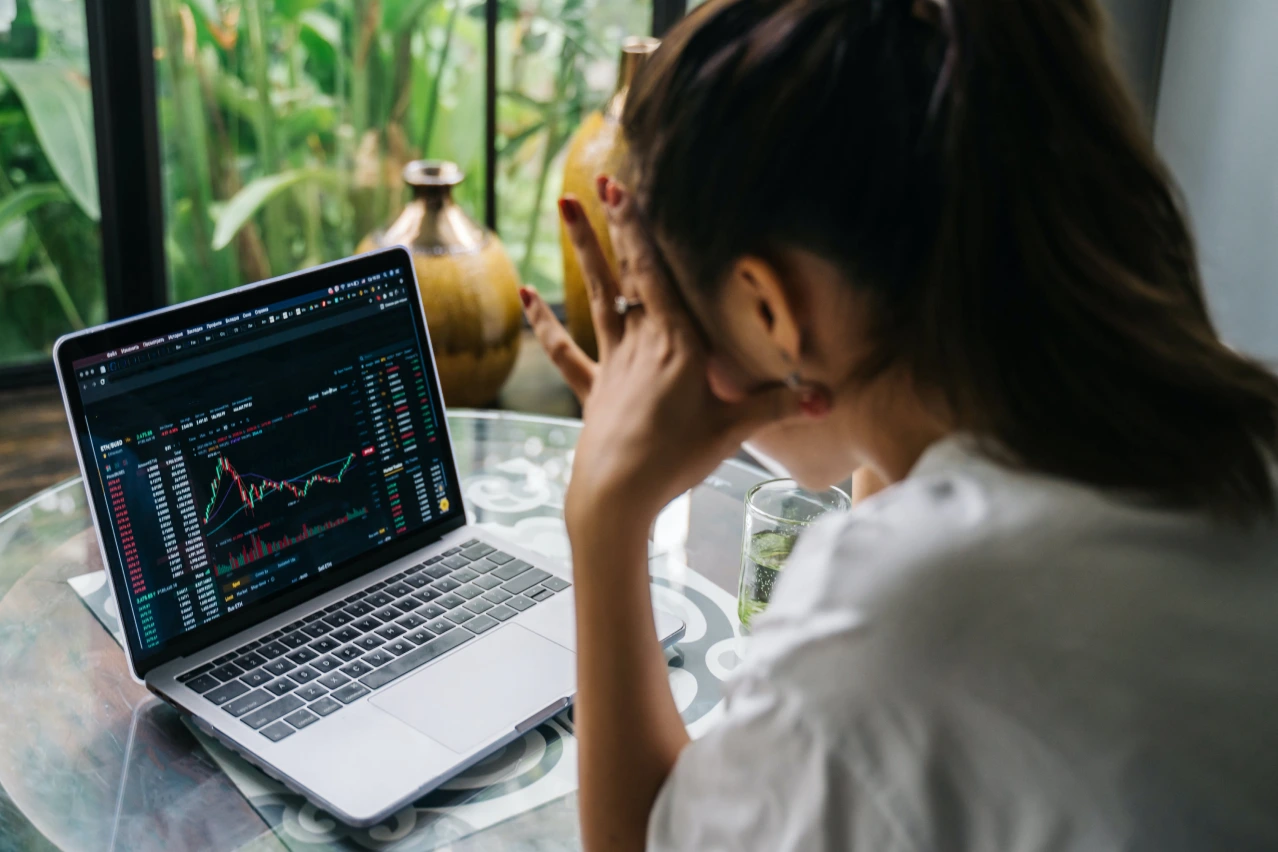You sit at your screen watching the EURUSD tick and ask yourself: Is Forex Trading Hard? You may worry that leverage, spreads, and fast market moves will wipe out gains before you build experience.
This guide provides a clear and realistic perspective on the profit potential in forex, covering returns, risk management, trading strategies, win rates, fees, capital requirements, and drawdowns, enabling you to set achievable goals and create a tailored plan. Ready to separate marketing hype from what actually makes traders profitable?
To help you test those ideas with real capital, Goat Funded Trader’s prop firm offers funded accounts and straightforward risk rules so you can measure returns without risking your personal savings.
How Profitable is Forex Trading in 2025?

Forex trading can be profitable, but it depends heavily on the trader’s skills, strategies, and discipline. The foreign exchange (forex) market is one of the most liquid and accessible markets, operating 24 hours a day, 5 days a week, across multiple global financial centers, with an average daily trading volume of $7.51 trillion. This allows traders to find various opportunities to profit from price movements.
High liquidity ensures that trades are executed quickly, often with minimal transaction costs. Additionally, leverage is a key feature of the forex market, enabling traders to control prominent positions with relatively small capital. This can amplify profits but also magnify losses, significantly increasing risk.
Profitability in forex hinges on several key factors: in-depth market knowledge, a solid trading strategy, effective risk management, and emotional self-control. Skilled traders who can interpret market trends and manage their risks well tend to achieve notable returns. Advanced tools and automated trading platforms also enhance the chances of profit by enabling systematic and disciplined execution.
However, forex trading carries substantial risk. Over 80% of retail traders lose money, primarily due to high leverage, market volatility, and inadequate risk management. Losses can exceed the initial investments, making effective risk management crucial to long-term success.
Data from 2025 shows apparent differences among trader groups. Institutional traders usually earn 8-15% annually with lower risk. The top 25% of retail traders can achieve returns of 10-25%, while mid-level retail traders often barely break even or make modest profits. The majority of retail traders in the bottom half incur losses.
Experience plays a significant role. Traders with more than five years of active trading have a higher chance of profitability. The first year is the toughest, with only about 20% of beginners making consistent gains. Focusing on specific currency pairs or strategies helps accelerate learning curves and profits.
Time commitment also impacts results. Full-time traders generally outperform part-time traders by about 35%. Among part-time traders, those who employ systematic, rule-based strategies tend to outperform discretionary traders. Automated trading systems have improved outcomes for people with limited trading hours.
The most profitable strategies in 2025 often use advanced technology. Algorithmic and AI-driven systems that adapt to market changes, integrate sentiment analysis, and employ multi-timeframe confirmations offer advantages. These require technical know-how but reduce emotional errors and false signals.
Risk management innovations are a key differentiator. Strategies that incorporate dynamic position sizing, portfolio diversification based on correlation, drawdown controls, and stress-testing frameworks help traders protect their capital and improve long-term profits.
Choosing the right trading timeframe is also vital. Ultra-short-term scalping is increasingly difficult due to algorithmic competition. Many retail traders find the best success with trades ranging from 4 hours to daily or swing trading (3-10 days in duration). Position trading based on fundamental analysis offers a low-stress alternative with competitive returns.
Adaptability matters. Profitable traders actively adjust their strategies based on market conditions, using systems to classify market states and switching tactics as trends or volatility phases change. Regular performance reviews help identify weaknesses, allowing approaches to be continually refined and improved.
Do Forex Traders Make Good Money?

Forex trading remains one of the most liquid and active financial markets globally, with daily trading volumes soaring above $8 trillion in 2025. This immense liquidity offers vast opportunities for traders to grow their capital with the right skills and strategies.
The amount that forex traders earn varies widely, depending on their experience, trading strategy, risk management, and market conditions. Experienced retail traders make up 5.5% of the entire Forex market and report earning consistent returns between 8% and 25% annually, while beginners often struggle to break even initially. With sufficient capital and a sound strategy, monthly profits of around $10,000 or more are attainable, though such figures require skill and discipline.
Access to advanced trading technologies and educational resources, once exclusive to institutional players, has made forex trading more accessible to retail investors. Features like copy trading and broker-provided trading signals can help novices replicate the strategies of successful traders, thereby enhancing their chances of profiting without extensive expertise. However, education and practice, such as paper trading before risking real money, remain crucial for success.
High liquidity in major currency pairs, such as the US dollar and the Euro, allows traders to enter and exit positions efficiently with tight bid-ask spreads. This reduces trading costs and increases potential profitability by requiring less price movement to break even on trades [original data].
Forex is a high-risk investment that demands psychological discipline. The market is notorious for the "churn and burn" effect, where many new traders lose money, often due to unrealistic expectations or falling prey to overhyped promises of easy wealth. Proper risk control and realistic goals are key to longevity and profit in this space.
While some dream of striking it rich quickly through forex, the truth is that consistent moderate gains over time build wealth more reliably than quick windfalls. It often takes 2 to 5 years of dedicated learning and practice to achieve consistent profitability.
An increasingly popular option for traders to access capital and reduce personal risk is through funded trading accounts, mainly offered by proprietary trading firms (prop firms). These firms provide capital for traders to deploy in the market, sharing profits while limiting downside risk for the trader. Prop firms demand robust strategies and disciplined risk management, but can be an attractive path for skilled traders to scale their earnings beyond personal capital limits.
Practical Next Steps For Someone Serious About Profits
Start with education, build a simple rules-based system, test it on historical data, then move to a demo account and a small live account while tracking the Sharpe ratio and maximum drawdown. Ask yourself what you will risk on each trade and what percentage of capital you must protect to stay in the game.
Goat Funded Trader gives you access to simulated accounts up to $800K with the most trader-friendly conditions in the industry—no minimum targets, no time limits, triple paydays, and up to 100 percent profit split, and our instant funding or customizable challenges let you scale beyond personal capital as with a prop firm. Join over 98,000 traders who have collected more than $9.1 million in rewards, enjoy our two-day payment guarantee with a $500 penalty for delays, and sign up now to Get Access to up to $800K Today with 25 to 30 percent off.
Related Reading
- What Is A Lot Size In Forex
- How Much Do You Need To Start Trading Forex
- What Is Swap In Forex Trading
- Forex Trading Account Types
- How To Learn Forex Trading
- Automated Forex Trading
- Fibonacci Forex Trading
- Pros And Cons Of Forex Trading
- Forex Trading Profit Per Day
Reasons Why Forex Trading is Profitable

Leverage
Leverage lets you control a larger notional position than the cash you put up as margin. For example, 1 to 200 leverage means a 1 percent move in the pair equals a 200 percent move on your invested margin. That amplifies returns while also magnifying losses. Use position sizing to limit exposure. Many traders risk 0.5 to 1 percent of their account per trade, so a single loss cannot wipe out progress.
Leverage also interacts with margin calls and stop-outs. Brokers set margin requirements and will close positions if equity falls below a threshold. Know margin levels, idle margin, and the math behind pip value so you understand how many pips of adverse movement will trigger a call. Try the calculations on a demo account before risking real capital.
Continuous Market Access
The forex market runs 24 hours a day, five days a week, across global sessions in Tokyo, London, and New York. That means meaningful moves can occur while you sleep or while your local stock market is closed. You can catch volatility at the London-New York overlap or position ahead of a central bank announcement.
Continuous access supports different strategies. Short-term scalpers utilize session overlaps to exploit tight spreads and high volume. Swing traders use overnight sessions to let trends develop. Use alerts, automated orders, or algorithmic execution if you cannot monitor markets constantly.
Liquidity
Forex is the largest market in the world, so major pairs generally offer deep liquidity and tight spreads. That allows you to execute large orders with low slippage and lower transaction costs compared to many other markets. Tight spreads improve the effective return on small move strategies where pip cost is a factor.
Liquidity changes. During major news releases or thin Asian sessions, some pairs widen and slippage rises. Check average spread, market depth, and broker execution type. Choose pairs and time windows where liquidity supports your trading size.
Profit From Both Rising and Falling Markets
Forex trades are always relative. Buying one currency is selling another, so you can profit when a currency rises or when it falls. Short positions can be executed directly in spot trading or via CFDs and futures, providing more opportunities in volatile markets. Traders can hedge exposure across correlated pairs to reduce directional risk.
Interest rate differentials provide an additional return channel. Carry trades earn the interest rate gap between currencies, although roll costs can flip when rates change. Test long and short strategies in demo conditions to see how execution, spreads, and rollover affect net returns.
Low Capital Barrier
Many brokers accept low minimum deposits and offer micro and mini lots. That allows beginners to practice live risk management and experience the emotional aspects of trading with limited capital. Demo accounts remove execution friction while you build a strategy and a trading journal.
Small accounts expose you to different constraints. Fixed costs, such as spread and commission, form a larger share of returns. Excessive leverage and overtrading can quickly drain a small account. Scale your position sizes to account balance and measure performance with drawdowns, win rate, average return per trade, and expectancy.
Risk and Execution Considerations
Profitability depends on more than market features. Trading costs, including spreads, commissions, and slippage, subtract from gross returns. Execution quality, broker counterparty risk, and order types influence real results. A clear trading plan, complete with risk management rules, position sizing, stop-loss, and take-profit logic, along with a disciplined review process, significantly improves the odds of achieving a positive expectancy.
Want to test one idea fast? Backtest on high-quality data, run it on a demo account, and then move to a small real-world size while tracking metrics such as profit factor, maximum drawdown, and average trade return.
Common Challenges Forex Traders Face and How to Overcome Them

Overleveraging Risks
Leverage can boost returns, but it also increases drawdowns and the risk of ruin. Treat leverage like a magnifying glass on your trades: position sizing and stop placement decide whether you get profits or losses. Use fixed risk per trade rules, for example, risking 0.5% to 2% of your capital, and calculate risk-reward and expectancy before entering. Backtest position sizing with realistic spreads and slippage to ensure your ROI projections align with live conditions. What maximum leverage leaves your account intact after a string of losing trades?
Revenge Trading
After losses, some traders chase quick wins and abandon their edge, increasing trade frequency and risking larger sizes. Recognize the signs: aggressive position increases, ignoring stops, and switching strategies midstream. Install cooldown rules such as stepping away for a session after a specified loss level, and record emotional state in your trade journal to see patterns in win rate and drawdown. Use automation to enforce a maximum daily loss and limit the number of trades to prevent impulsive moves. Which rules can you put on autopilot to stop emotional decisions?
Insufficient Education
Basic knowledge will not produce consistent profits; you need a process that covers macro drivers, technical setups, money management, and execution quality. Study economic calendars, correlation shifts, and how spreads and commissions chew into gross returns. Run structured study blocks every week, practice strategy drills on a demo, and measure performance metrics such as expectancy and net ROI. Ask for feedback from mentors or a peer review of your backtests to spot overfitting and hidden slippage. What single topic will you study this week to improve your edge?
Emotional Trading Decisions
Greed and fear alter behavior: traders hold onto losers too long and cut winners too early, which undermines profitability, even with a decent win rate. Define entry rules, stop rules, and exit criteria before you trade, and log every deviation with the reason and outcome. Use fixed orders whenever possible and review your win rate, average profit, average loss, and expectancy every month to identify behavioral patterns that may lead to losses. Can you commit to a trade plan that automatically enforces those metrics?
Mismanaged AI Trading Bots
Bots can execute strategies without emotion, but they only mirror the quality of the rules and data you feed them. Poor backtesting, data snooping, and ignoring execution costs can lead to results that appear great on paper but fail in live trading. Validate algorithms out of sample, stress-test during low-liquidity periods, and track slippage, latency, and execution fill rates as performance metrics. Combine automated execution with human oversight and routine parameter tuning to keep performance stable. How will you measure a bot’s live performance against simulated returns?
Geopolitical and Economic Shifts
Trade policies, energy shifts, and regional alignments change correlations and create new trend opportunities while breaking old ones. Monitor leading indicators, fiscal moves, and central bank signals and translate them into scenario-based plans rather than fixed assumptions. Utilize macro-aware strategies, such as trend following with adaptive stops or carry trades adjusted for policy risk, to protect returns. Which geopolitical event do you track that would force a change in your position sizing or pair selection?
Technological Advances
AI analytics, real-time sentiment, and high-frequency liquidity provision raise the bar for execution and insight. Access to these tools can improve signal quality and reduce latency-related losses, but costs and complexity rise too. Prioritize tools that raise your edge: reliable data feeds, execution quality dashboards, and simple machine learning models that predict slippage or order fill probabilities. How much of your edge comes from faster execution versus better strategy selection?
Regulatory Changes
Leverage caps, transparency rules, and reporting requirements affect the amount of capital you need and the net returns you can expect after accounting for compliance costs. Understand tax rules, reporting timelines, and how spread and commission disclosure impacts your breakeven win rate. Adjust position sizing and strategy frequency to account for new capital requirements and reporting windows, thereby preserving net profitability. Have you recalculated your breakeven win rate to include recent regulatory cost changes?
Volatility Patterns and Market Behavior
Forex combines brief, high-impact shocks around data releases with long, calm periods where algorithmic liquidity keeps spreads tight. Flash volatility raises slippage and widens effective costs, while calmer periods let you scale positions and grind profits. Build volatility-adjusted position sizing and dynamic stop rules, and schedule entry times outside known shock windows or use a smaller size through news events. Which volatility regime yields the best risk-adjusted returns for your strategy?
Related Reading
- Forex Trading Candlestick Patterns
- Forex Trading Algorithms
- Risk Management In Forex Trading
- Forex Trading Day
- Minor Forex Pairs
- Forex Trading Vs Crypto Trading
- Advanced Forex Trading
- Copy Forex Trading
- Best Books On Forex Trading
- Best EA For Forex Trading
Technology and Tools for Enhancing Profitability in 2025

Advanced Trading Platforms
Cloud-based platforms now handle heavy computation and order routing, so your laptop only needs a browser to function. This reduces latency and eliminates the need for expensive local servers, while improving order execution and reducing slippage. Modern hubs link forex with equities, futures, and cryptocurrencies, allowing you to spot correlated moves that impact risk and return. They support visual strategy builders, scriptable indicators, and APIs that enable you to deploy automated systems to production. Do you want tighter spreads and cleaner fills? Choose platforms with direct market access or ECN routing, transparent transaction costs, and execution quality reports you can audit in real time.
AI and Machine Learning in FX
How does machine learning change the edge that traders can earn? Models identify subtle patterns in price action and combine them with sentiment from news and social media to estimate probabilities of future moves. They tune parameters faster than a human, test thousands of variants, and output risk-adjusted position signals that feed money management rules. Expect dynamic position sizing, volatility-adjusted stop-loss rules, and model-driven guardrails that aim to protect equity during periods of market drawdown. Be cautious with data quality and model drift; automated systems require regular monitoring, retraining, and limits on leverage to prevent mathematical amplification of losses.
Data Analysis Frameworks
Robust decision-making rests on layered data. Combine tick price, volume, economic releases, order book depth, and sentiment feeds to build context for entries and exits. Use a backtesting engine that simulates real spreads, slippage, and execution delays so strategy performance reflects live trading conditions. Employ walk-forward optimization, out-of-sample testing, and Monte Carlo stress checks to measure robustness and avoid curve fitting. Performance attribution tools break down PnL by currency pair, time of day, and signal, allowing you to see whether a strategy earns its edge or simply overtrades. Track expectancy, win rate, profit factor, drawdown, Sharpe, and ROI for each system to decide which to scale.
Mobile Trading Tools
Mobile apps now offer desktop-level analysis and provide fast alerts, allowing you to act even when away from your desk. They sync positions and order books to the cloud so you retain context across devices. Advanced alerts trigger custom notifications for price, volatility spikes, or changes in implied liquidity, and include confirmed execution messages. Security uses biometric login, device verification, and encrypted keys to reduce the risk of account takeover on public networks. On mobile, you can also apply preset risk rules that limit leverage, auto-close positions at predefined loss thresholds, and calculate position size to match your risk per trade.
Practical Workflow: Putting Tools Together to Improve Profitability
Which tools move the needle on net returns? Combine a low-cost execution platform with ML-driven signals and a strong data framework so you can measure real-life performance rather than theoretical returns. Force live A/B testing, monitor transaction costs and slippage per instrument, and use attribution reports to prune losing signals. Keep position sizing and drawdown limits central to every automated strategy so that higher leverage does not destroy expectancy. Regularly run stress tests across high volatility periods to confirm strategy robustness during liquidity squeezes.
Risk Controls and Human Oversight That Protect Capital
Automation and analytics raise potential returns but also create new failure modes. Implement strict risk limits in the execution layer, require human review of significant parameter changes, and utilize ensemble models to mitigate the risk of single model failure. Maintain a simple trade journal that records the reasons why a trade was triggered and which model or indicator was responsible, thereby preserving institutional memory and counteracting trading psychology slips. When a strategy underperforms, determine whether the loss is due to a market regime change, data issues, or execution degradation before adjusting the parameters.
Related Reading
- Forex Options Trading Strategy
- Best Laptop For Trading Forex
- Forex Trading Course For Beginners
- Forex Trading App For Beginners
- How To Choose The Best Forex Broker
- Best Forex Pairs To Trade During New York Session
- Forex Trading Strategies For Beginners
- Forex Algorithmic Trading Strategies
- Best Forex Pairs For Beginners
How to Increase Your Chances of Profitability in Forex Trading

Master Essential Knowledge and Skills
Achieving consistent profits in forex trading begins with a solid foundation of knowledge and understanding. While technical analysis is a critical tool for identifying entry and exit points, relying solely on it is insufficient. Understanding the overall market structure provides essential context for technical signals, enabling traders to interpret price action more effectively.
Equally important are principles of risk and money management, which safeguard trading capital during inevitable drawdowns. Additionally, awareness of trading psychology helps prevent errors driven by emotions or cognitive biases. Following a structured learning approach focused on mastering these core competencies is far more effective than haphazardly consuming random information sources in trading education.
Establish a Professional Trading Business
Successful forex trading should be treated as a professional business rather than just a hobby or side activity. This mindset shift requires developing a comprehensive business plan that includes measurable trading goals and clear performance metrics. Implementing proper accounting and performance tracking systems supports objective evaluation and continuous improvement.
Establishing standard operating procedures for all trading activities fosters consistency and efficiency. Furthermore, maintaining a strict separation between personal finances and trading capital helps manage risk and ensures financial discipline. This professional framework creates the essential structure needed for long-term profitability.
Create a Focused Trading Workspace
The conditions under which trading occurs significantly influence the quality of decision-making. Creating a dedicated workspace free from distractions allows better focus on market analysis and execution. Using multiple monitors provides a broader perspective on various markets and time frames simultaneously.
Ensuring reliable internet connectivity through redundant connections minimizes the risk of connectivity failures during critical moments. Additionally, automated data backup systems protect against loss of vital research and trade records. These environmental factors collectively enhance a trader's ability to apply their trading strategies consistently.
Set a Realistic Timeline for Profitability
Patience and realistic expectations are vital for sustaining motivation and progress in forex trading. Typically, traders should anticipate a learning phase lasting 6 to 12 months, during which they focus on education before committing significant capital to live trading. This is followed by an early implementation phase of 6 to 12 months, during which small position sizes enable the refinement of strategies based on real market experience.
Building consistency by developing a statistical edge with sound risk management generally requires an additional 12 to 24 months. Only after reaching consistent profitability should traders gradually increase their position sizing in the scaling phase. Adhering to this staged timeline helps maintain discipline and reduces the risk of premature discouragement. How will you prove statistical consistency before you increase leverage or capital at risk?
Get 25-30% off Today - Sign up to Get Access to Up to $800K Today

Goat Funded Trader gives access to simulated accounts up to $800K with the most trader-friendly conditions in the industry. You face no minimum targets and no time limits while trading, which removes artificial pressure that forces rash decisions. The program offers triple paydays with up to a 100 percent profit split, allowing successful traders to keep more of what they earn.
More than 98,000 traders have collected over $9.1 million in rewards. Payouts are guaranteed within 2 days, with a $500 penalty for any delays to ensure you receive payment promptly. Choose customizable challenges to prove your skill or start trading immediately with instant funding options. Sign up to get access to up to $800K today and receive 25 to 30 percent off on select plans.
How Funded Accounts Affect Profitability and Risk
Access to larger capital alters your risk math. With more capital, you can size trades conservatively and still make meaningful returns. That lowers personal stress and helps preserve capital during losing streaks. Funded accounts also change incentives. When rules favor prudent management, traders learn to protect downside while pursuing gains.
Know the contract rules. Some programs enforce limits on instruments, max position size, or daily loss caps. Goat Funded Trader’s trader-friendly terms remove time pressure and minimum profit requirements, which reduces forced overtrading.
Costs That Eat Profit: Spreads Slippage and Execution
Transaction costs matter. A wide spread or slow execution can turn an edge into a loss. Market volatility increases slippage and widens effective costs. Institutional style order flow and fast execution improve the chances of keeping a system profitable. When backtesting, include realistic spread and slippage assumptions to estimate net performance accurately.
Additionally, plan for overnight financing on leveraged positions and tax payments. Those items lower headline returns if they are ignored.
What Profitable Traders Actually Do Day to Day
They keep a trading log. They backtest and forward test strategies. They update risk parameters after reviewing performance metrics. They cut their losses quickly and follow rules when greed or fear would otherwise lead them astray. They schedule review sessions and refrain from trading on impulse.
Ask yourself: Do you have a trading rule that tells you exactly when to enter and exit? If not, design one and test it on history and demo accounts.
Practical Steps to Reduce Difficulty and Improve Profit Chances
Start with education and a structured plan. Backtest a strategy over multiple market regimes. Use a demo account to remove execution surprises. Trade small live or use a funded programme that aligns with prudent risk rules. Keep a journal of trades and review weekly—scale size only after proving consistency.
Would you prefer a path that lets you trade immediately with capital behind you? Instant funding options allow you to practice risk control under real-world conditions without risking your entire capital base.
.svg)
.avif)



.avif)





.svg)

.svg)